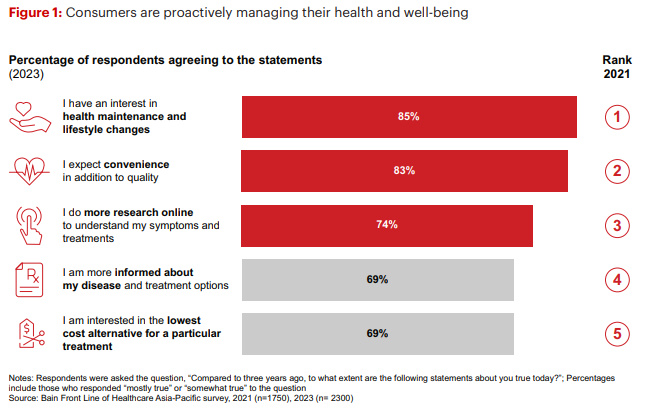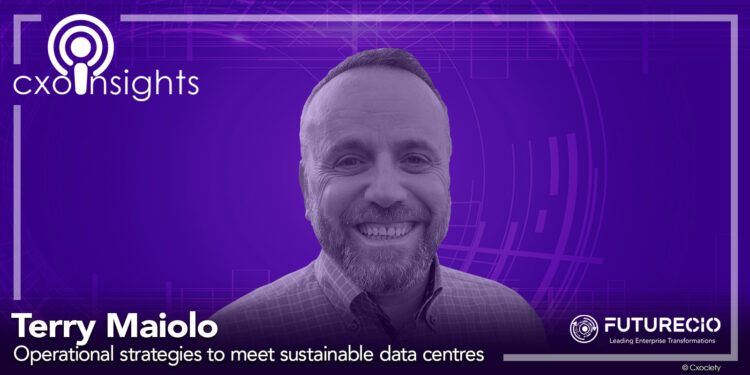Mordor Intelligence estimates the Asia-Pacific data centre (DC) market at around 14.27 thousand MW in 2024, predicting it to reach 23.20 thousand MW by 2029. JLL projects continued to increase in rank density, particularly among hyperscalers in response to the growing demand for computational power.
With sustainability and climate change high on the agenda for many businesses, a multi-prong challenge of data centres is meeting customers’ net zero emissions goals and their targets.
What can data centre operators do to save energy while keeping equipment operating in optimum environments?
OVHcloud VP & GM for APAC, Terry Maiolo says businesses in the region are embracing digital transformation at breakneck speed. He adds that the necessity for big computing, that comes with AI and IoT, is placing the industry under significant pressure and leading to a growth in regional data centres.
Primary targets within the region include Syndey, Singapore, and Tokyo. Interestingly, Singapore and Tokyo are under pressure because of their vacancy rates, which currently stand at less than 2%. There are other emerging markets in the region including Thailand, Malaysia, and Indonesia, which are coming forward as viable solutions. For Singapore to remain the most viable choice, sustainability must then be prioritised, urging providers to enhance efficiency in data processing and computing.
Key environmental issues of concern

Asked to identify the key environmental issues that all data centre operators must overcome, Maiolo listed three: energy, water, and space. Data centres consume vast amounts of electricity to process, store and manage data, which generates huge amounts of heat. He pointed out that cooling these facilities requires about 50 times more power and energy compared to a normal commercial office space.
“High temperatures and humidity pose additional challenges, especially for traditional air conditioning – which must cool the entire room, not just the servers. Evaporative cooling systems – common in data centres – can consume 25 million litres of water annually for a one-megawatt (MW) facility,” he added.
He also noted that hyperscalers are also reporting substantial upswings in water consumption, due to increased computing demands, notably for AI technologies. He reiterated that balancing the need for data infrastructure and environmental sustainability remains a pressing challenge, especially in land-scarce Hong Kong and Singapore.
Impact of AI update on DC operations
Maiolo acknowledged that AI is straining data centres, with 73% of AI workloads predicted to shift to the cloud by 2026. This influx of computing contributes significantly to carbon emissions; a Stanford study found that GPT-3 produced 502 tonnes of carbon emissions in 2022.

"AI is also estimated to consume 134 terawatt hours of electricity per year. Data centre operators must consider all their practices – not just energy consumption but also material usage within their data centres, emphasising reuse, repurposing and recycling."
Terry Maiolo
Maiolo pointed out that growing waste and carbon footprint across the industry is a concern for the industry. He added that with governments and organisations becoming increasingly aware of environmental concerns, there is a greater need for (carbon footprint) transparency among cloud providers.
“This accountability also extends to suppliers as sustainability factors are scrutinised. There is then no doubt that businesses will give a lot more consideration to the cloud providers who are more sustainably responsible,” he continued.
Staying ahead of trends
Maiolo opined that businesses are looking for providers that prioritise data sovereignty, sustainability, and interoperability. He conceded that data sovereignty has surged in importance with many across APAC such as Indonesia and Vietnam introducing stringent localisation regulations – making it a confronting regulatory landscape.
“Providers who operate in alignment with General Data Protection Regulation and have regional data centres must ensure that data sovereignty and protection against the extraterritorial regular locations are met,” he suggested.
He commented that sustainability now rivals price, performance, and scalability in importance – with some organisations placing it higher. He suggested that providers excelling in sustainability gain a competitive edge, aligning with price, performance, and scalability requirements.
On the topic of interoperability. As many hyperscalers operate within closed ecosystems, this complicates transitions between cloud providers, consuming resources, and increasing costs.
Businesses seek freedom to explore different opportunities, necessitating the avoidance of proprietary tools that may hinder mobility. Providers and businesses alike benefit from maintaining openness and flexibility in their technology choices.
Looking ahead, Maiolo says many CEOs of large organisations have already made significant statements about the importance of sustainability and how it can be expected to take precedence among traditionally key considerations for the business.
He opined the same is to be expected with data centres. “Sustainability and efficiency go together. So, we can expect to see the data centre market shift to pay equal attention to greener operations alongside the traditional pillars of performance, price, and scalability,” he concluded.
Click on the PodChat player to hear Maiolo share his views on the operational strategies that operators need to muster to meet sustainable data centres.
- Please give us a State of the Data Centre in Asia today.
- Focusing specifically on the operational aspects of data centres, what are the key environmental issues that all data centre operators must overcome?
- We’ve seen Governments in Thailand, Singapore, Hong Kong, and almost everywhere around the region, including Australia, proposing, if not accelerating national AI strategies. For data centre operators, particularly in Asia, how are they responding to this demand? At the same time, how do you see them fine-tuning their operations so that they can remain on point when it comes to their own net zero emissions targets?
- For data centre operators and hyperscalers, what is your recommendation for them to stay ahead, and on course around sustainability practices, while at the same time supporting new business needs and new opportunities such as AI?
- What does OVHcloud bring to the table?
- For data centres wanting to be more sustainable, what can be their first practical step towards their sustainability journey?
- Since we're talking about data centres, the ability to operate them more efficiently and all that, anything that you think we should include?
- With the proliferation of new data centres to meet the demands, introduced by a greater need for AI and sustainable operations, what's your forecast like for the data centre market? What will it look like in 2024 and going ahead?





